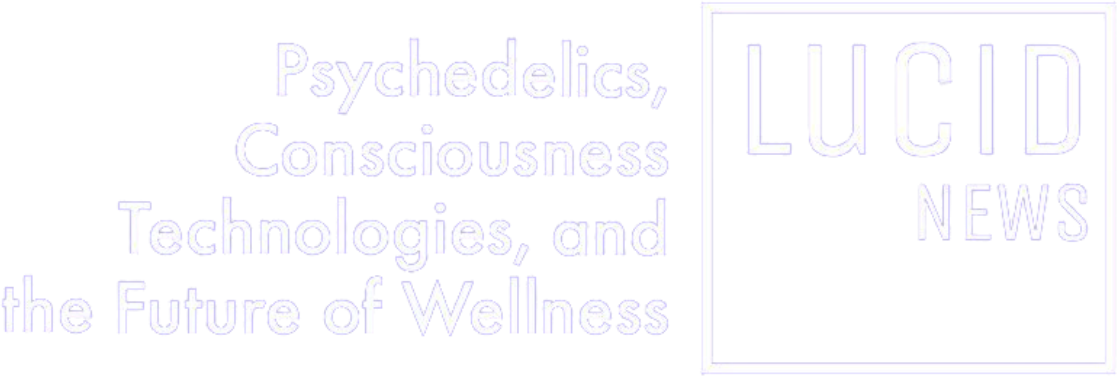Are Psychedelics a New Paradigm or Business as Usual?

Back in the spine-tingling hysteria of the dotcom boom in the late 1990’s, when investors threw dump trucks of money at dotcom startups, I sat with the CEO of a startup who was considering me to head up marketing. Let’s call him Monroe. Coming from the investment world he regaled me with the sacks of loot to be made in this new and breathlessly exciting field. His declarations of unlimited lucre seemed to stretch credulity to the limits of sobriety. At one point I asked a simple question that thankfully eliminated me from the field of contestants. “What about profit and loss?”
Monroe eyed me with pity in his eyes and shook his head “It’s a whole new paradigm,” he declared. “The old rules don’t apply. It’s all different now.” I was apparently a troglodyte for even suggesting that profit and loss (how old and outdated) mattered in the new goldrush. Out with the old, in with the new.
Monroe and his merry band blew through fifty-five million dollars of other people’s money before the startup, which ran on the vaporware of the much-hyped new paradigm, was in fact obliterated by the harsh reality of no profit and much loss. When the dotcom crash of 2000 arrived, the company was swept out to sea. Apparently, no profit and all loss, coupled with absurdly inflated if temporary market values proved beyond the pale after all, and the startup tanked along with thousands of others. Monroe kicked back in his grand home on the Concord River and returned to his lavishly well-stocked investment fund, with not a scratch. The investors on the other hand, got punched up badly in the face of the old paradigm, pockets turned out, gone from a bright shiny promise to losers of a blood sport.
In the hilarious Mel Brooks movie and play The Producers, the key protagonist Max Bialystock, producer of a doomed-to-fail play entitled Springtime for Hitler, declares that there are two rules regarding funding a play. Rule number one, never use your own money. Rule number two, never use your own money. Plucky dotcom CEO’s, with dollar signs popping from their eyes like in cartoons, wooed investors into the new paradigm, engorged their startups with massive gobs of cash, furnished lavish offices and blew through it all with the fury of a fire-bombing. Remember this, if you are pushing “a whole new paradigm,” for goodness’ sake never use your own money. Lure somebody else into it.
Overnight Crypto Millionaires?
Enter cryptocurrency, another whole new paradigm. A couple of years ago I sat with a man who flogged his gray cells overtime trying to convince me to make loads of money with the new money. All I had to do was fork over a bunch of money. As he described the vast sums to be made, with the assured if not cosmically ordained rise in crypto values, making money was like taking candy from a baby. All he needed to complete the picture was slicked-back hair, a pencil mustache and two-toned shoes. He’d have made a great barker for the freak tent at a circus. The pitch was that with the new cryptocurrency, the sky was the limit. “Millionaires are being made overnight,” he declared, again with the same hyperventilation that characterized many dotcom CEO’s. The nuclear winter of the 2022 crypto crash demonstrated that the good old system of profit and loss and market values is, as it has always been, the ruling paradigm within which virtually all successful commerce dwells in precarious balance.
As cryptocurrency continues its luge run and many people have lost their life savings, that nasty, lingering old paradigm has struck like a blizzard, burying the whole new paradigm in several feet of ice. As many as a million people are believed to have lost much or all their money in the self-immolation of crypto firm FTX alone. Hopeful and well-intentioned people, seduced by the siren song of easy money, have lost it all, rendered in the cryptocurrency meat grinder. Many seniors who had scraped together a modest retirement fund will now live out their later years in penury. It’s sad and it’s awful, and the whole new crypto paradigm turns out to be riddled with holes and contradictions. It’s a whole new paradigm until it isn’t.
Psychedelic Pharma Goldrush
Speeding along in the same lane, enter the psychedelic pharma goldrush, where visions of sugar plums dance in the eyes of investors. For a few years I have warned in articles and presentations that the whole new paradigm of psychedelic pharma involves much fluff-air, vaporware and sleight of mind. I’m not just some nay-sayer standing by the roadside throwing potatoes at the pharmaceutical heroes as they parade on to glory. I have worked for three pharma startups, lectured at some of the largest pharmaceutical companies in the world, and have rubbed shoulders and even elbows with pharma scientists and executives for more than forty years. And I am here to tell you, sober and alert, that the whole new paradigm is baloney. Very few of the current psychedelic pharmaceutical startups will survive, but most will perish. Look into my crystal ball and remember these words. There will be a full, multi-company crash. I wish this upon nobody, but you can see it coming like a speeding cement truck.
The hype around psychedelic pharmaceutical companies, whose stocks are almost uniformly sliding into a financial ditch, involves a few fantastic and unrealistic claims. One is that these companies will speedily invent whole new “safe” psychedelics, accomplishing in a few short years what has taken nature eons to accomplish through brilliant and meticulous evolution within a vastly complex natural ecosystem. Another is that some of these new and speedily developed psychedelics will deliver all the benefits of tripping without the tripping. Yet one more is that savvy investors will make a boodle. Remember this grasshopper, never use your own money.
Drug development is extremely difficult and producing any drug that can move successfully through the requisite stages of clinical safety and efficacy trials and achieve official drug approval by FDA is a Herculean and massively expensive task. It costs on average $350 million to bring one single drug to approval. Even for entities who may have that amount of cash on hand, FDA drug approval is a high risk venture. Count my words oh fellow travelers, enthusiasm for this enormous expense, in the absence of a guarantee of success, will dim like an old incandescent bulb. Expect what is known as “re-allocation of funds.” I predict that a very few entities will soldier on into an uncertain future burning a few hundred mil, hoping to sell commonly available and currently inexpensive psychedelics at an exorbitant cost. We are already witnessing some of these companies shutter, as ably described in Ken Jordan’s recent news analysis. The FDA has been hostile to psychedelics since the late 1960’s, and the process of drug approval is a wade through quicksand. The current rate of success for drug approval averages 10 – 20%. In other words, at least eight out of ten companies who shoot for FDA drug approval fail.
What are Psychedelic Therapists Training For?
In step with the march of psychedelic pharma into a foggy and uncertain future, uplifted by the bright and shiny promise of a new day, legions are going through training to become psychedelic assisted therapists, a field that enjoys only sparse legal protection in places that have decriminalized some psychedelics. There is no federal cover for this and many would-be assistants dwell in a legal limbo land in anticipation of a precious few psychedelic drugs that may possibly emerge with FDA approval within their lifetime. What are these many well-intentioned people going to do? They are going to practice with people doing holotropic breathing or are on molly or assist people tripping on mushrooms or acid or toad exudate in yurts off the grid. But the clinical profession that many seek may prove elusive for a long time.
Right now ketamine, a non-psychedelic anaesthetic with powerful dissociative effects and potent anti-depressive properties, gives opportunity for some trained assistants to utilize their skills in a clinical setting. But this is a long way and far afield from Cary Grant’s 100 or so psychiatric sessions on LSD. We haven’t even gotten back to the 1950’s with respect to clinical applications of psychedelics.
As various towns and municipalities enact various degrees of decriminalization, trained psychedelic assisted therapists will be able to attend to people tripping somewhat more safely. But unless there is a radical federal change in the current Schedule 1 listing of the psychedelics, there will be no legal manufacture, sale or distribution of these medicines. Newly minted therapists can go down to Jamaica or Costa Rica and work at mushroom centers for modest wages. In fairness that may prove a terrific gig. What they are not likely to do any time in any realistic future is assist anybody in a medical clinic with actual FDA approved psychedelics. However, if by some means psychedelics are decriminalized on a federal level, then it’s boom town. Some in the psychedelic community see federal status of psilocybin changing soon. But there is no evidence of this yet, and it is not an outcome that every savvy investor will throw money at. The notion may just be the stuff of the opium pipe, a smokey dream not likely to materialize any time soon. I’d hope to be proven wrong on that.
The Untouchables
In a recent Lucid News article, Josh Hardman writes, “Today, we’re arguably seeing a ‘Get Clean for FDA’ in the psychedelics space, where some folks and organizations are eschewing the ‘cultural baggage’ of psychedelia past and present in their engagements with regulators, investors and other key stakeholders in the path to psychedelics as medicines in the West.”
Let’s dissect this for what it is. The hundreds of millions of us throughout all of history who have tripped outside a clinical setting are the cultural baggage in question. We represent 99.9% of all users of psychedelics for all time, tripping in forests and fields, on beaches, along rivers, by streams, in tents, yurts, kivas, malocas, temples, caves, around fires, at drumming circles, festivals, concerts, and happenings. The other meager struggling 0.01% is trying hard to reposition us all. I for one am going to wear tie-dye, chant and beat a drum loudly, and keep awareness right where it should be, on good people tripping whenever and wherever they wish. The con must not go on. If there ever was a time to fly a freak flag and keep the tripping record straight, it’s now.
I am at peace with some pharma company someday getting approval for something and providing an opening for jobs for the masses who have been trained to assist tripsters. It seems likely. But psychedelics do not belong to the pharmaceutical sector, and they must never. They may share a slim slice of the rainbow-colored pie, but only a slice. For the rest of us, in keeping with the reality of who has been tripping where and when and how, we have a duty to keep psychedelics freely available, and cognitive liberty unobstructed by hapless wonks.
Featured image: Made with Midjourney









